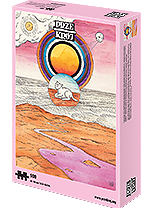
In Europe, mandalas are usually associated with beautiful paintings in the shape of a circle, but in the East they have a deeper meaning—they are both a form and tool of meditation, as well as a symbolic reflection of the perfect order of the universe.
Carl Gustav Jung noticed their therapeutic dimension and recommended that his patients create mandalas. Today, they are increasingly used in art therapy as a method of restoring life balance.
Agnieszka Rostkowska: Since when have people created mandalas?
Luiza Poreda: I believe forever. One of the cave paintings from the Paleolithic era can be considered as the first mandala; next to depictions of animals and other elements of nature, archeologists discovered a drawing of a circle with a dot in the middle. Presumably, a human tried to grasp the reality around them in this way: they presented reality as a circle and themself as a point in the middle. We may wonder if this was not the first manifestation of the self-consciousness of a human who saw themself as part of the world. They chose the circle, most likely referring to the spherical form of the sun, which was worshiped by people as a deity. Circle and oval patterns can be found in many prehistoric paintings in Africa, Europe, and North America. References to the circle as the most perfect shape occur in subsequent epochs—from ancient and medieval philosophy to Leonardo da Vinci, who presented his Vitruvian man in a circle—and in various cultures, such as the Indigenous peoples of South America, the Celts, and the Slavs.
The term “mandala” comes from Sanskrit, in which it means a “circle.” Has the mandala always been a drawing or painting in the shape of a circle?
No, it can








